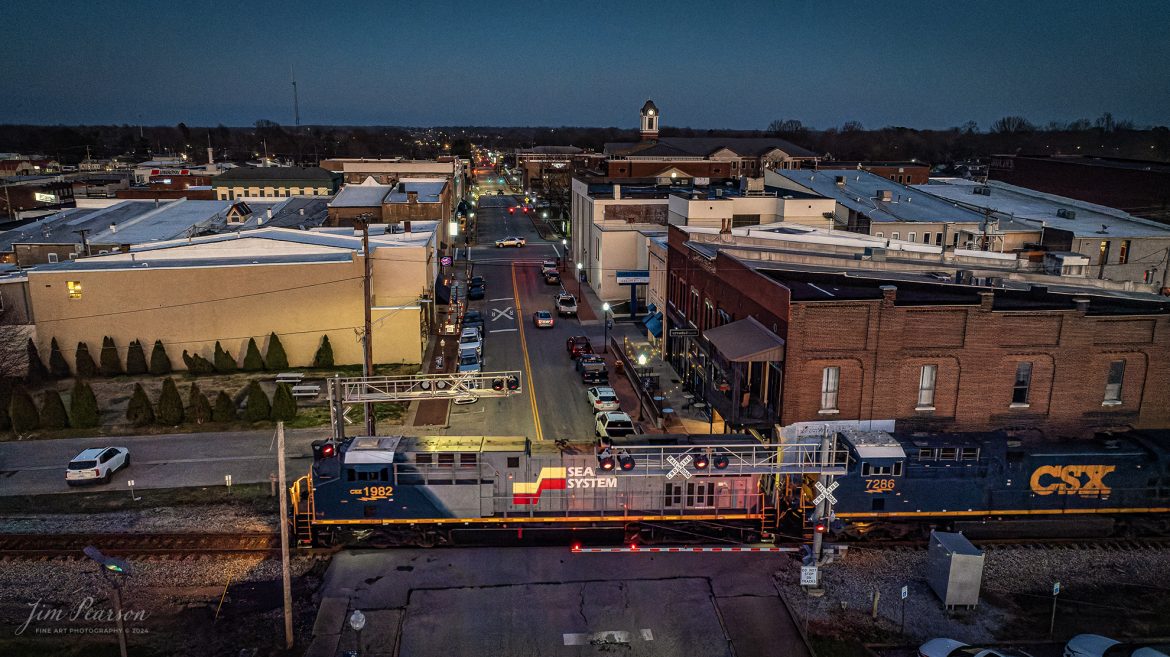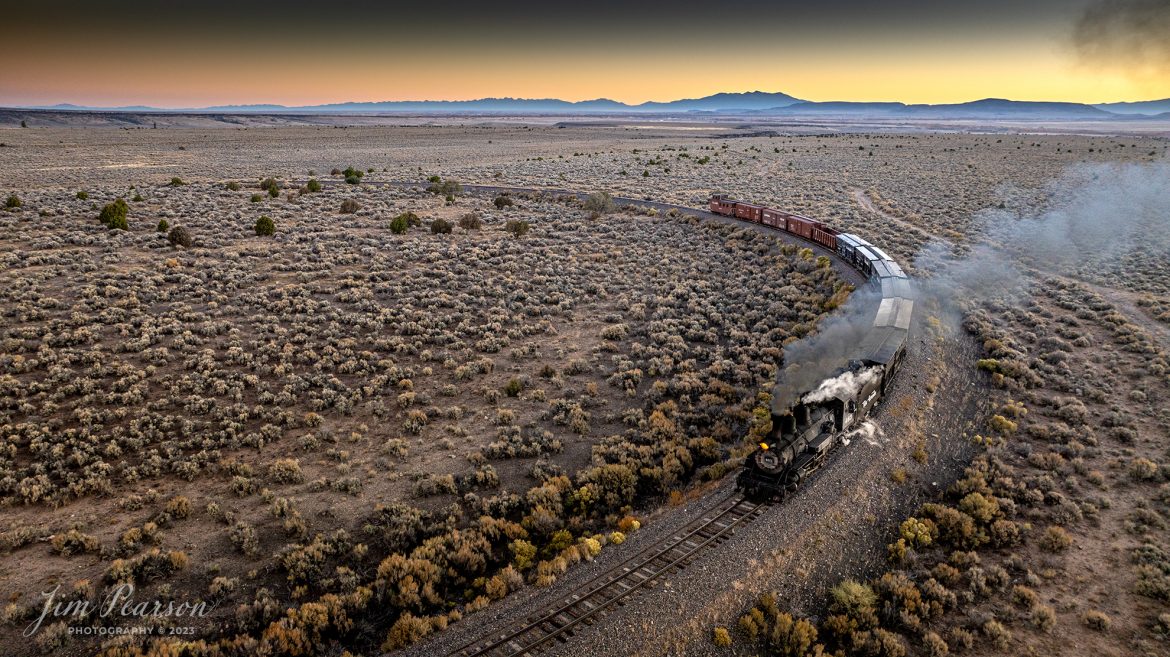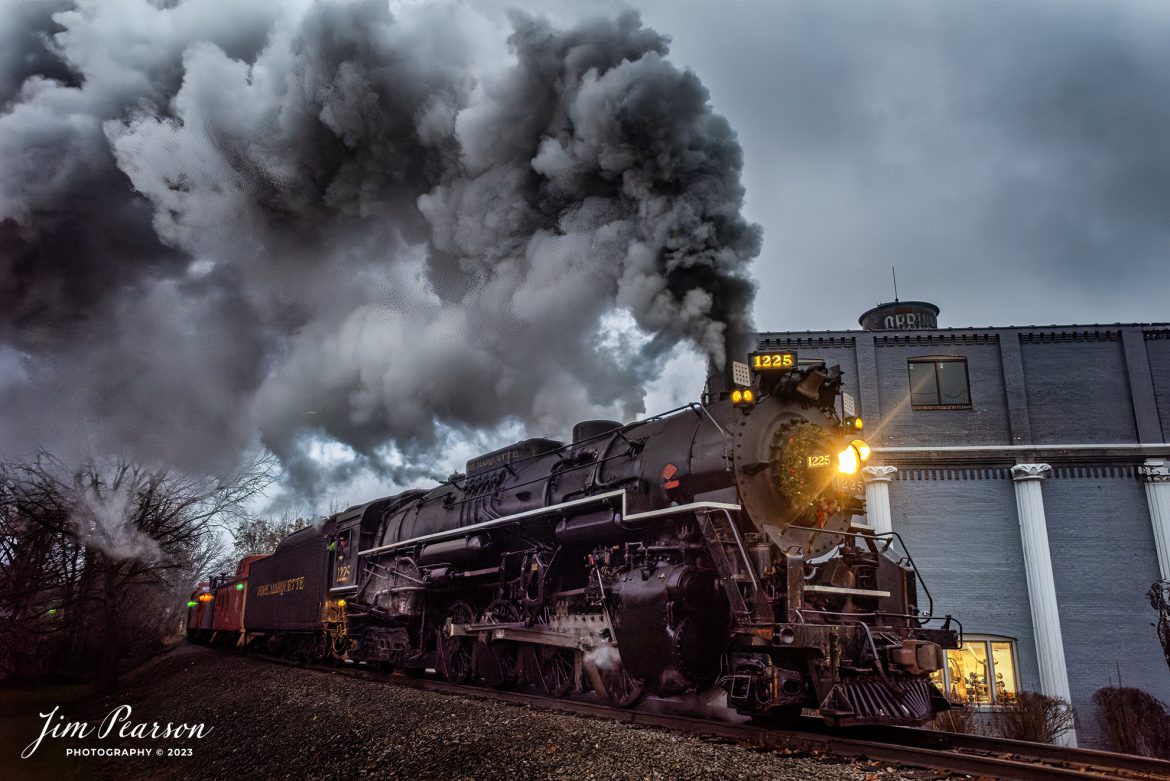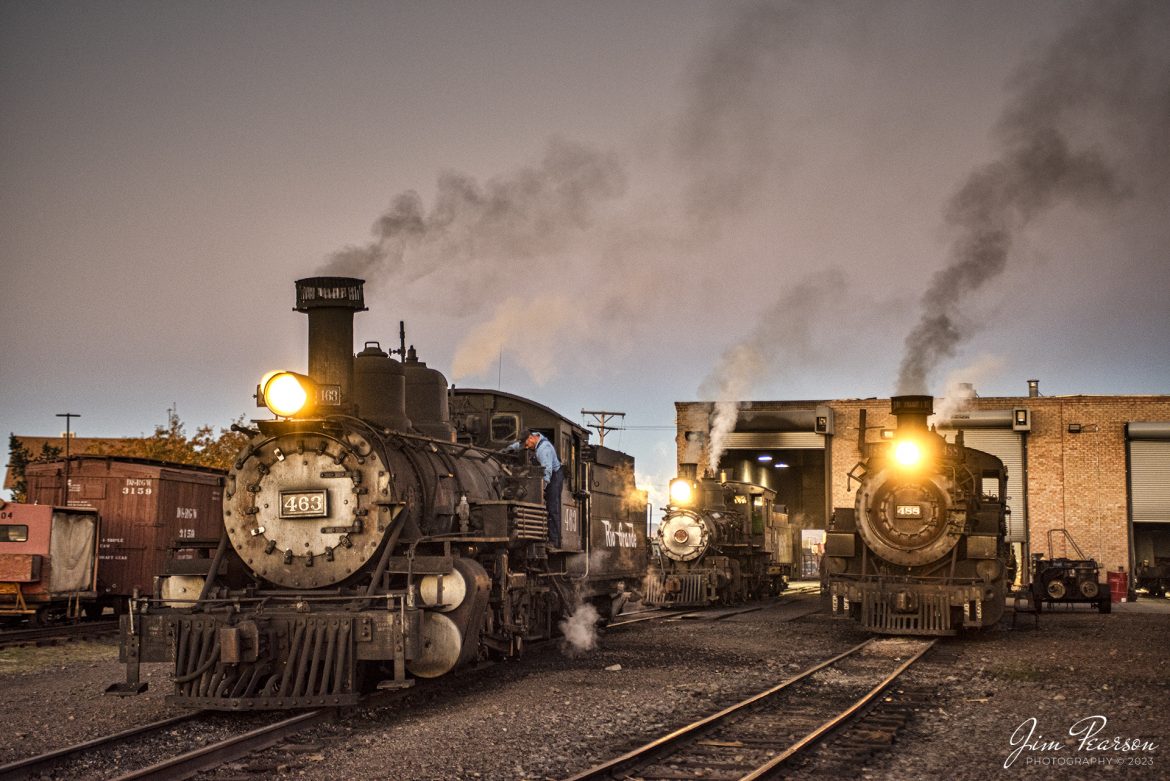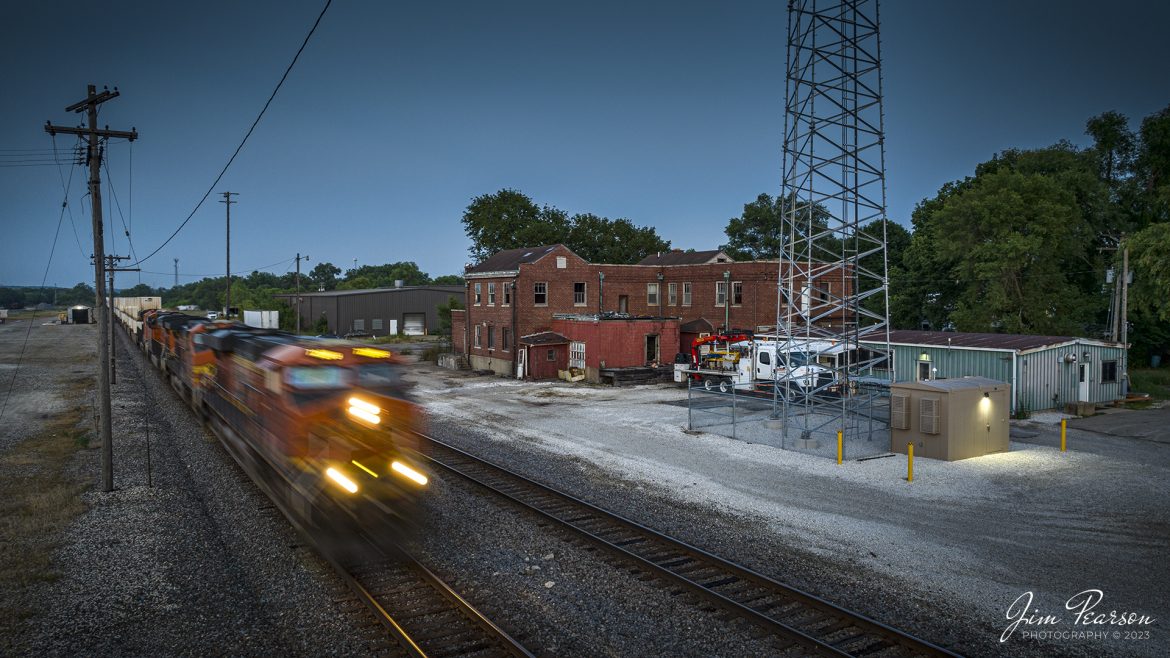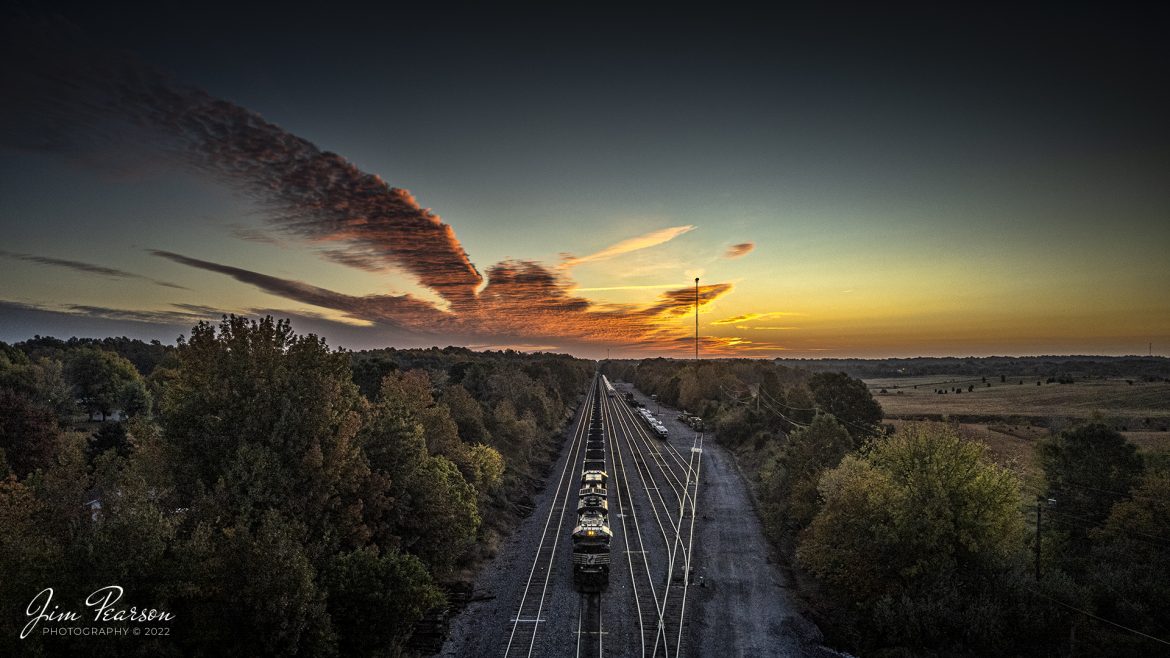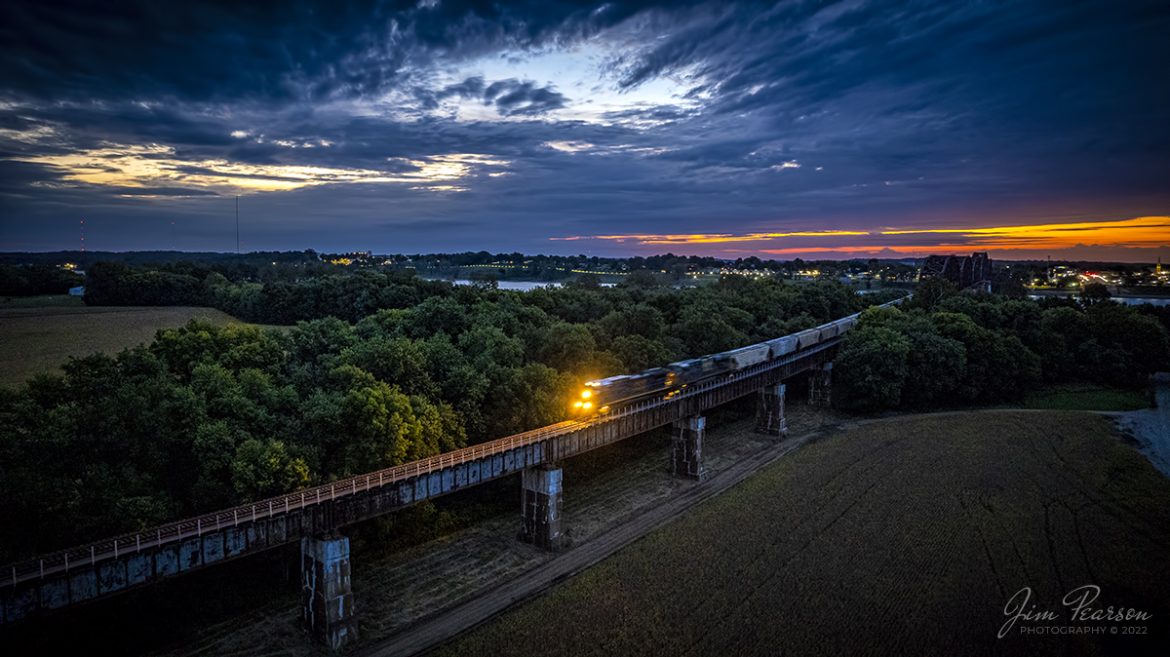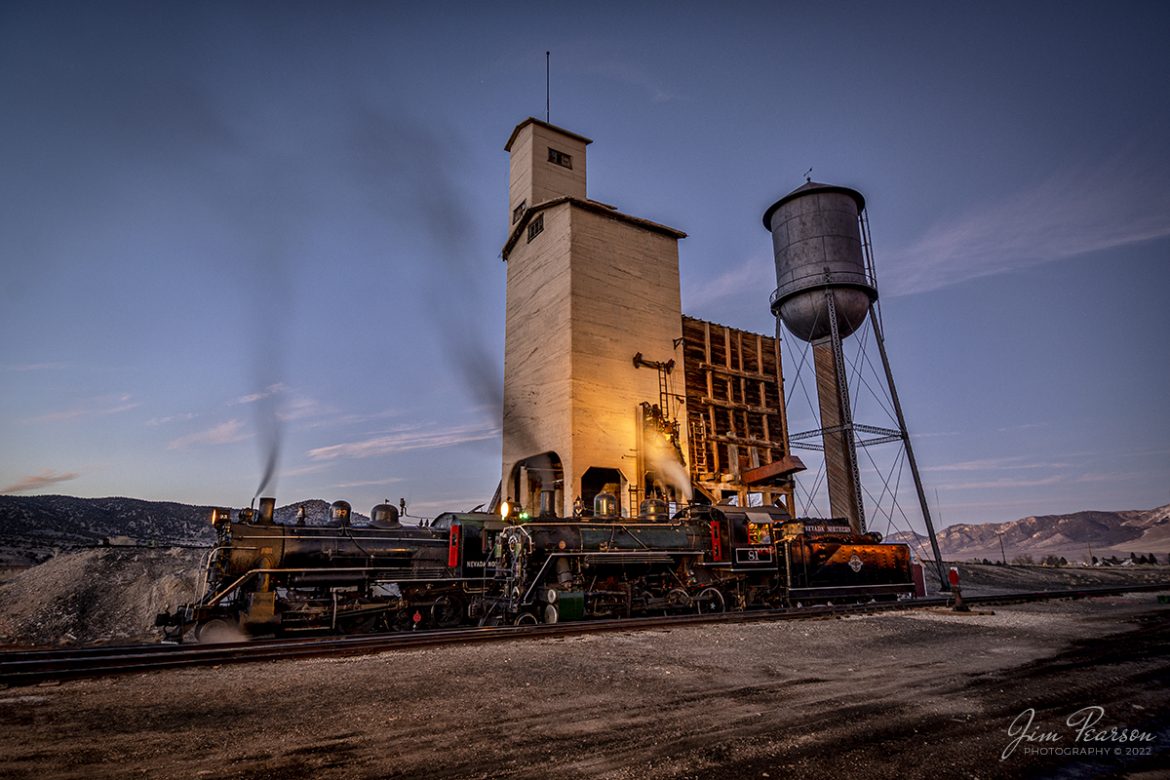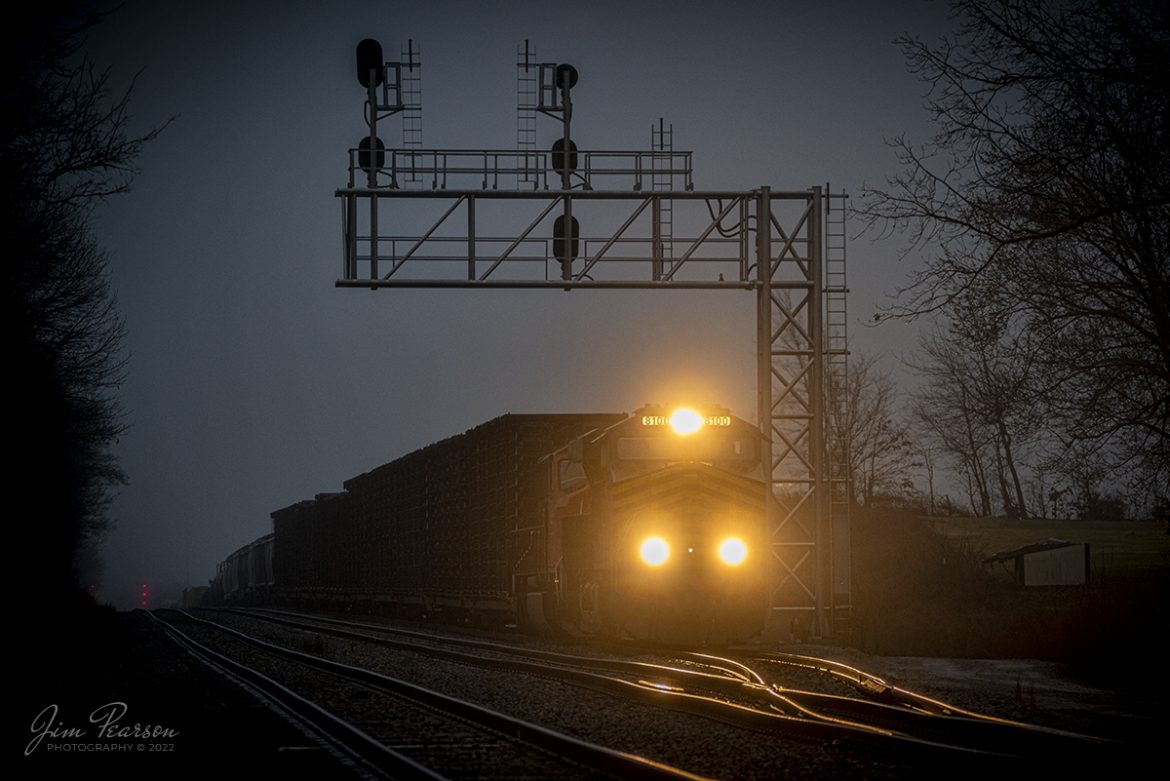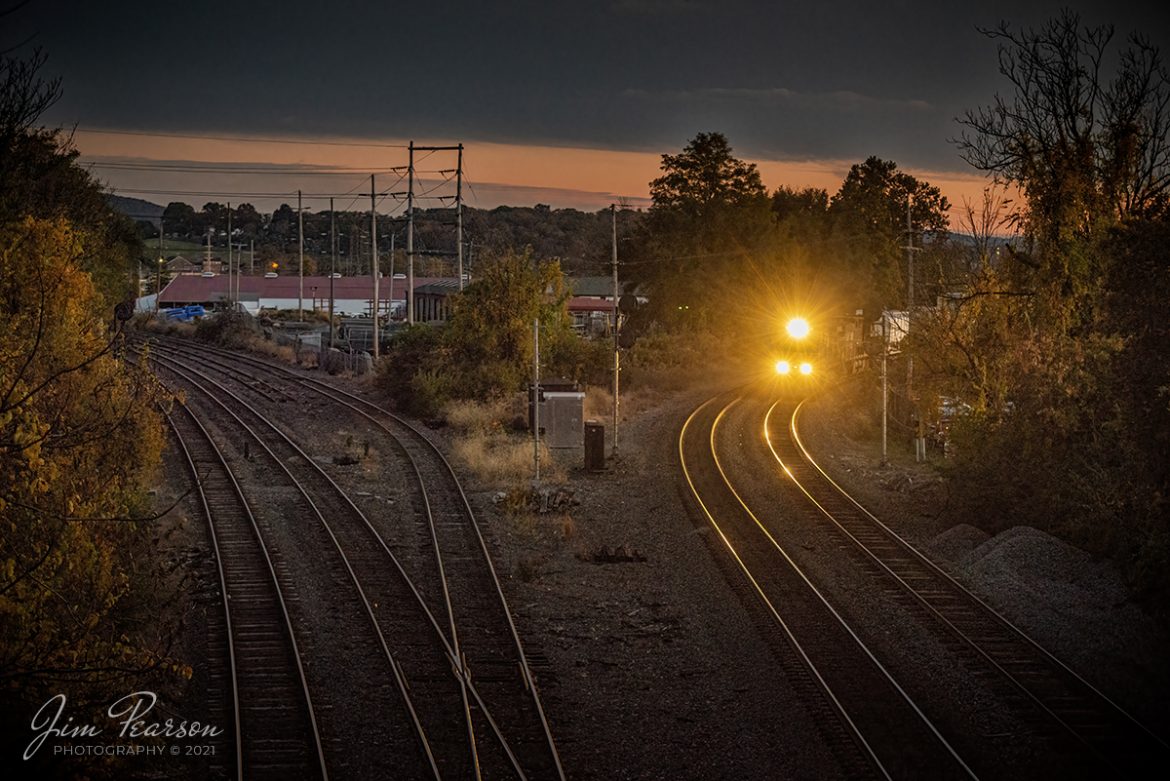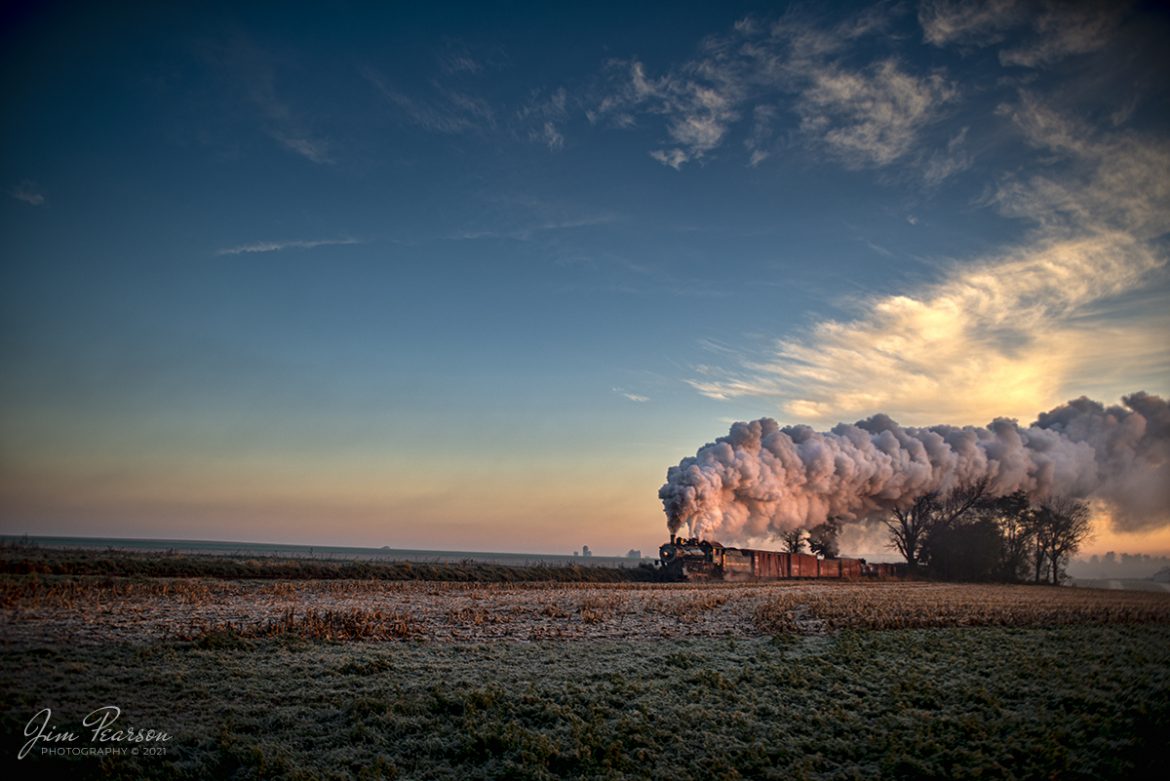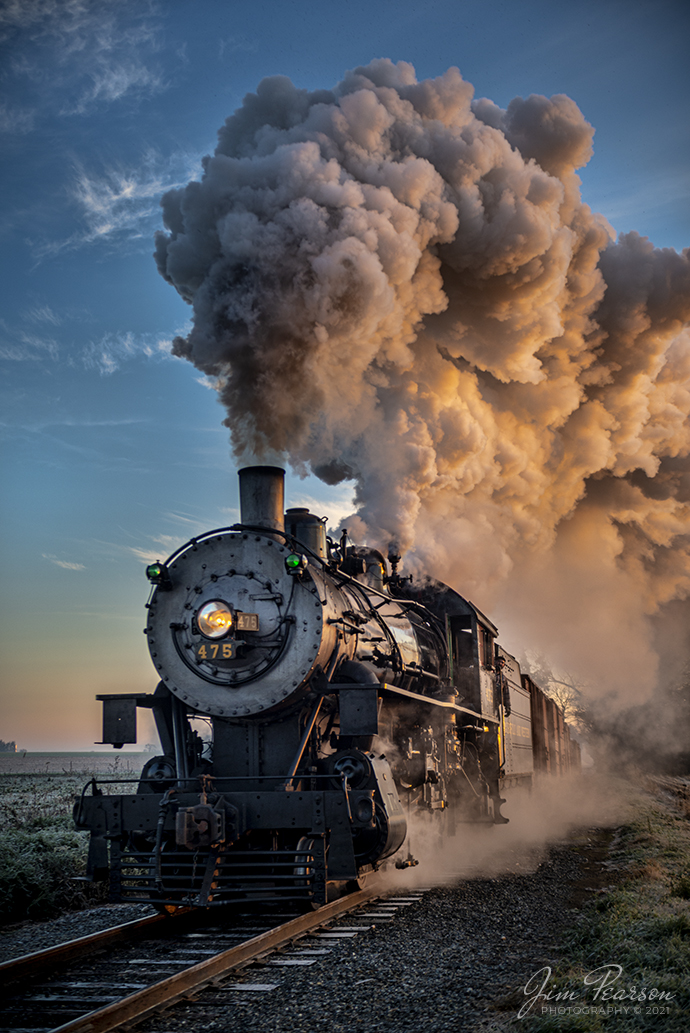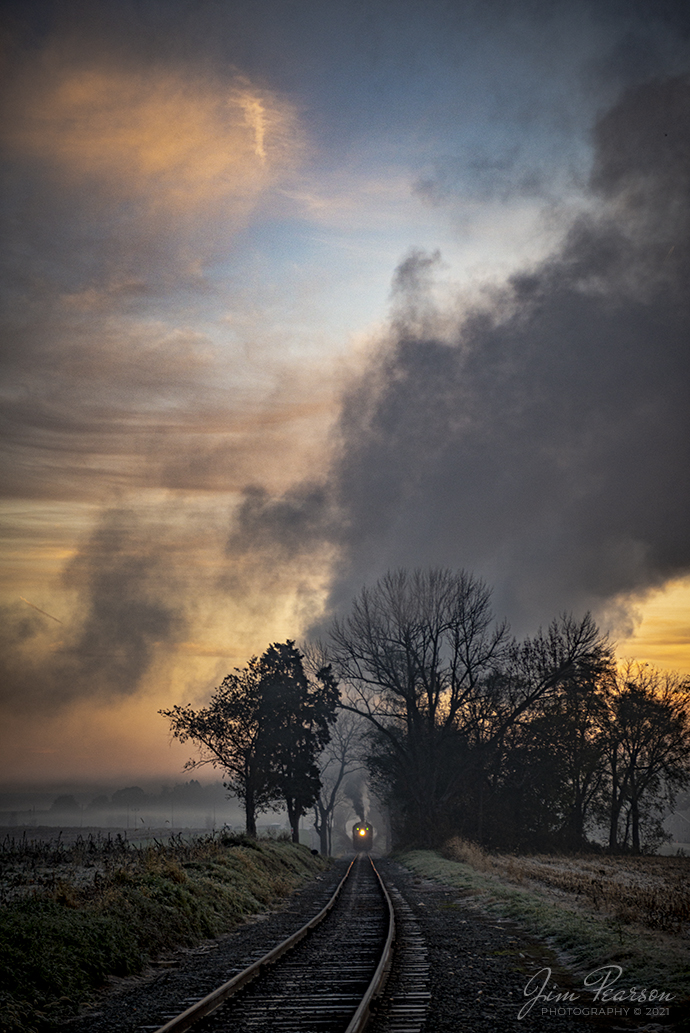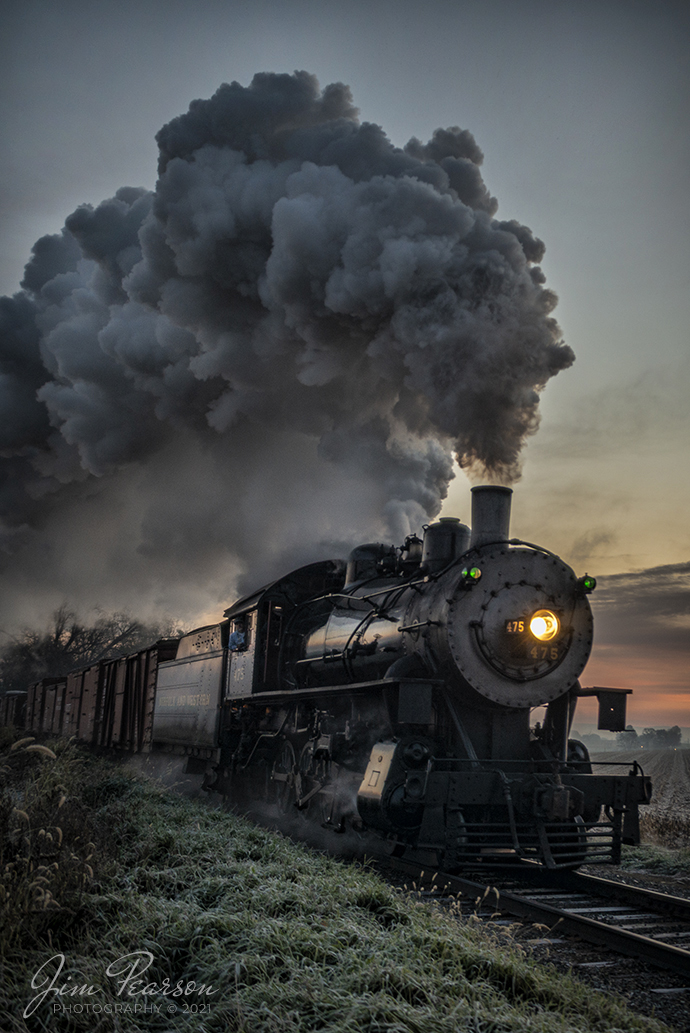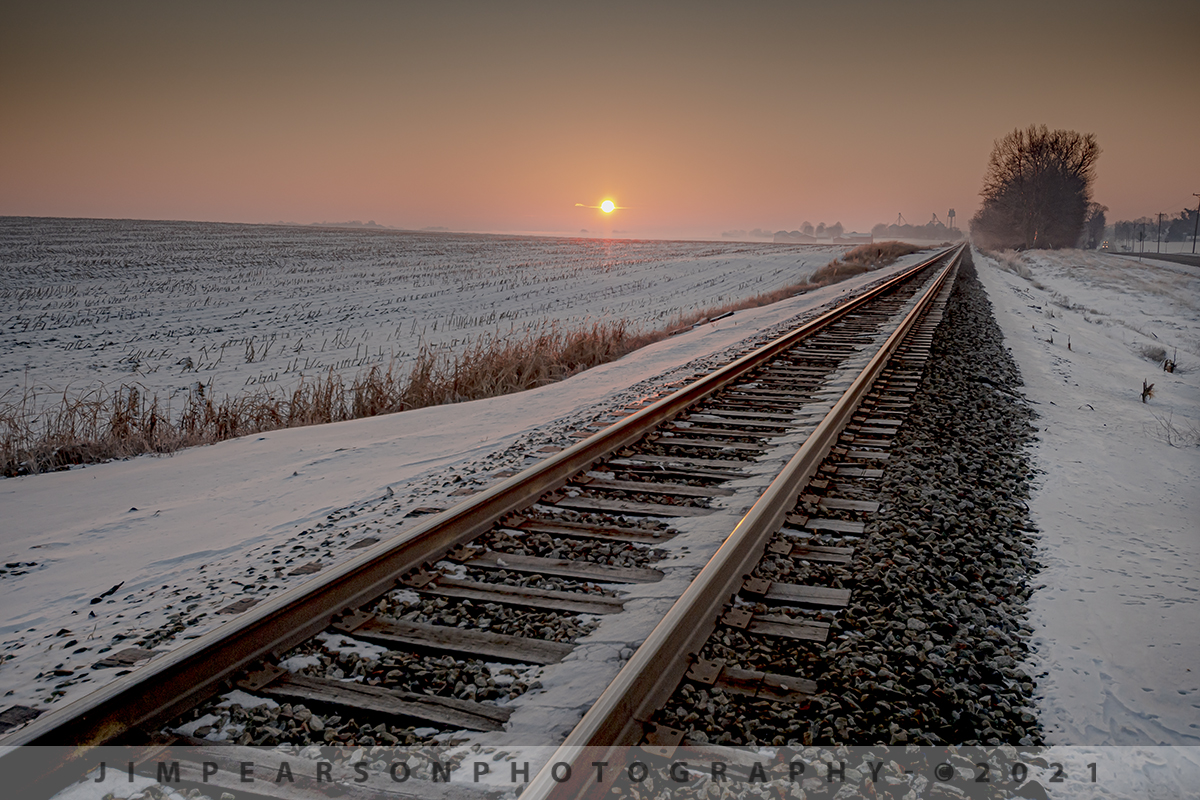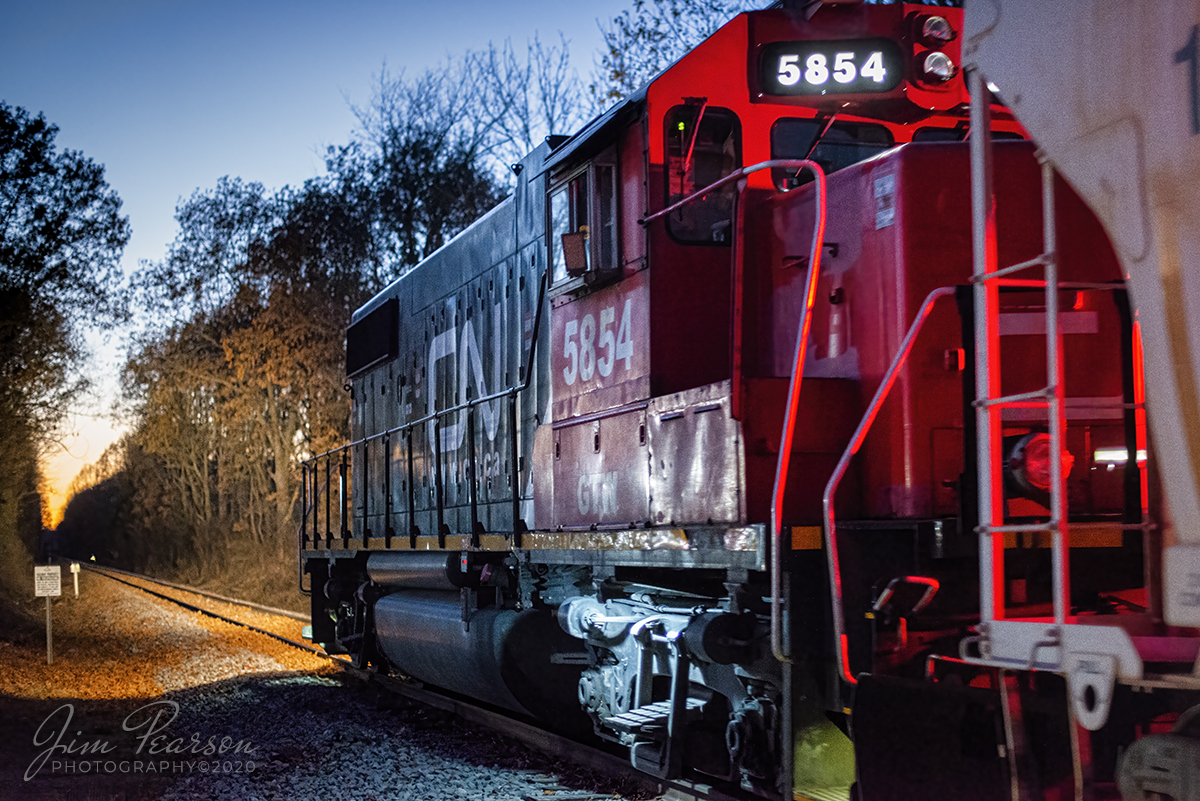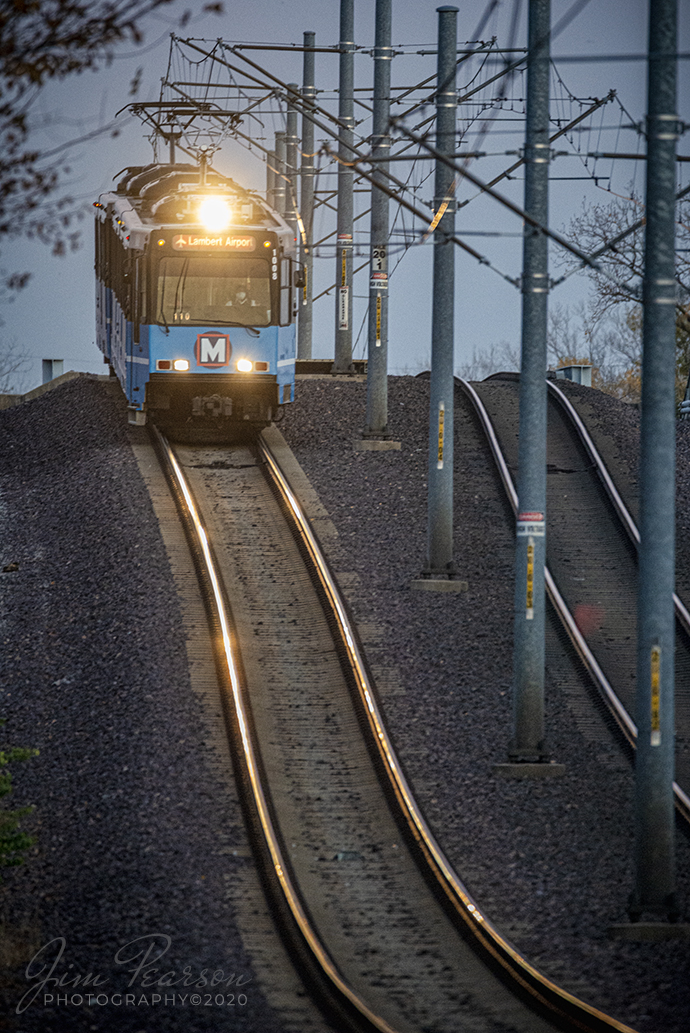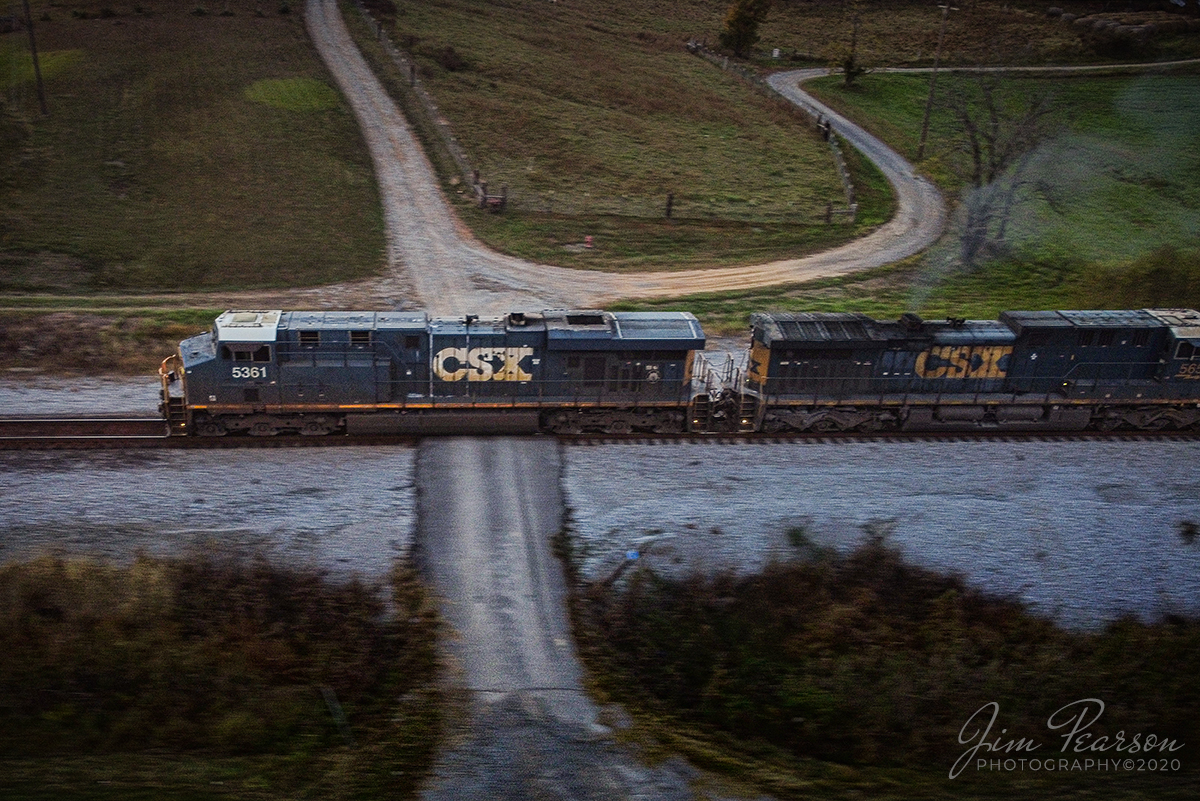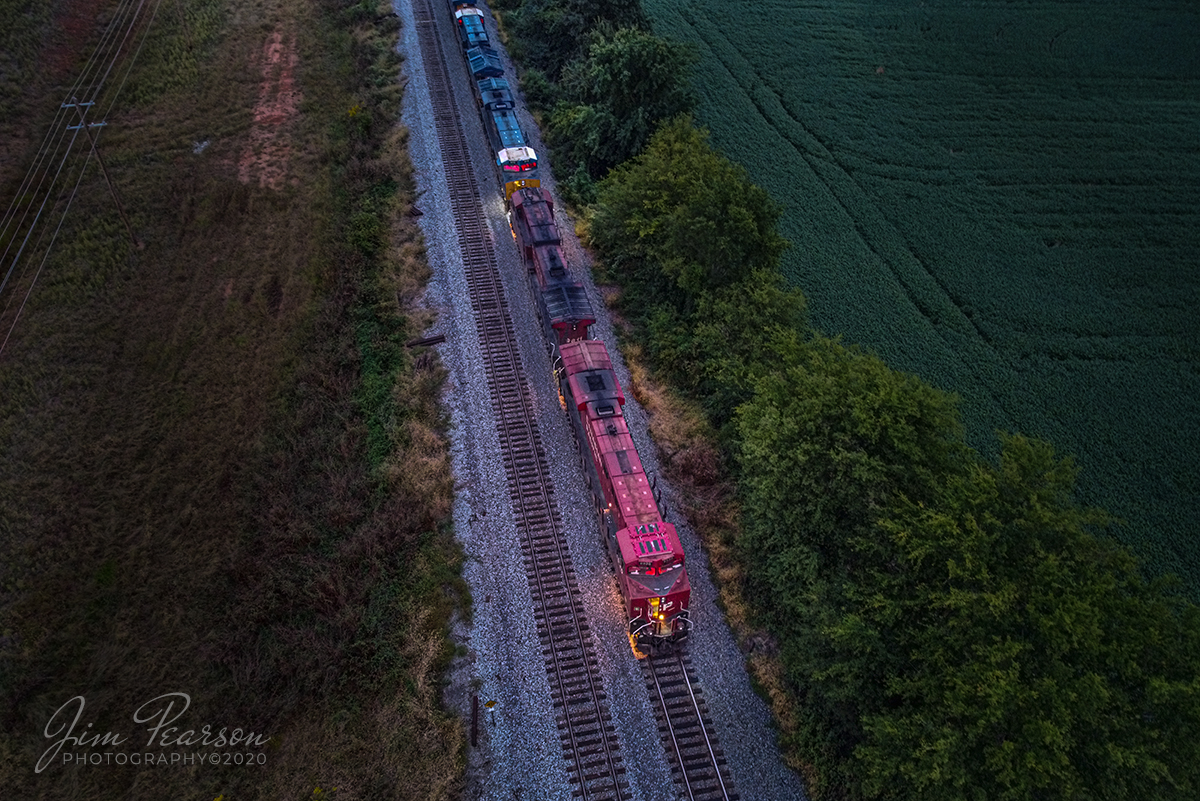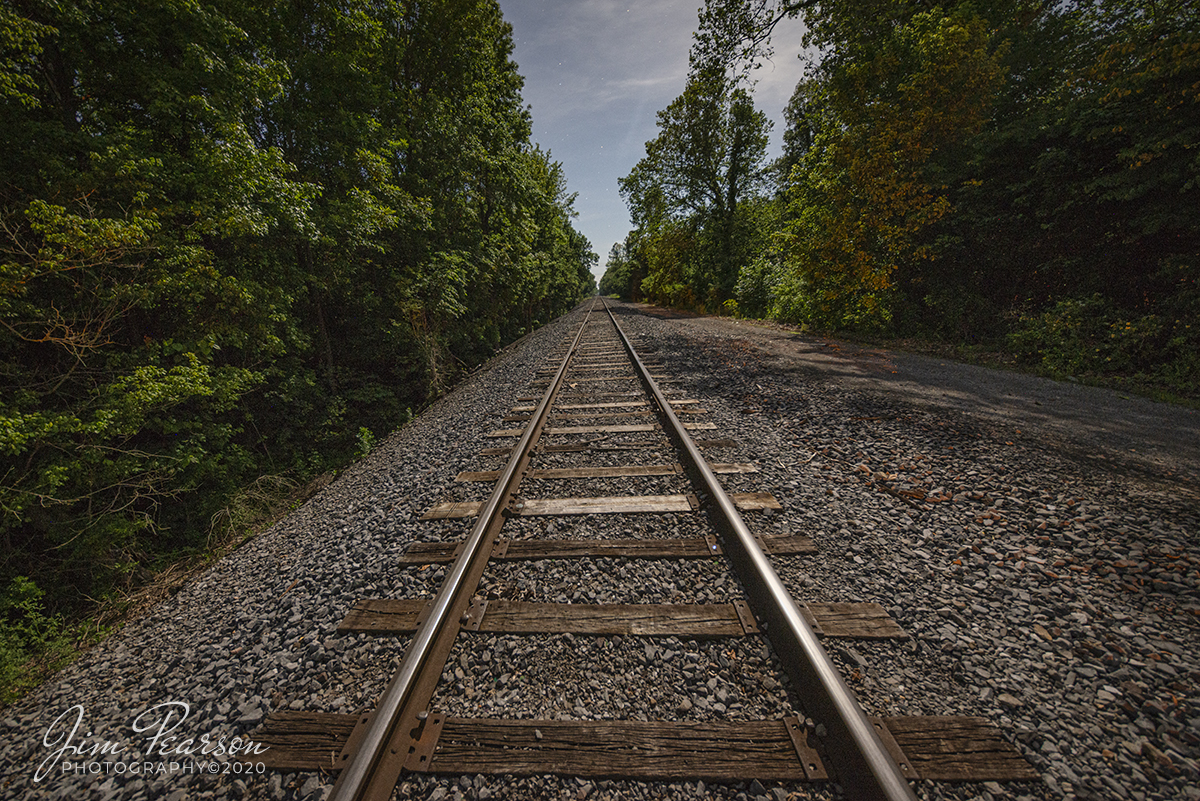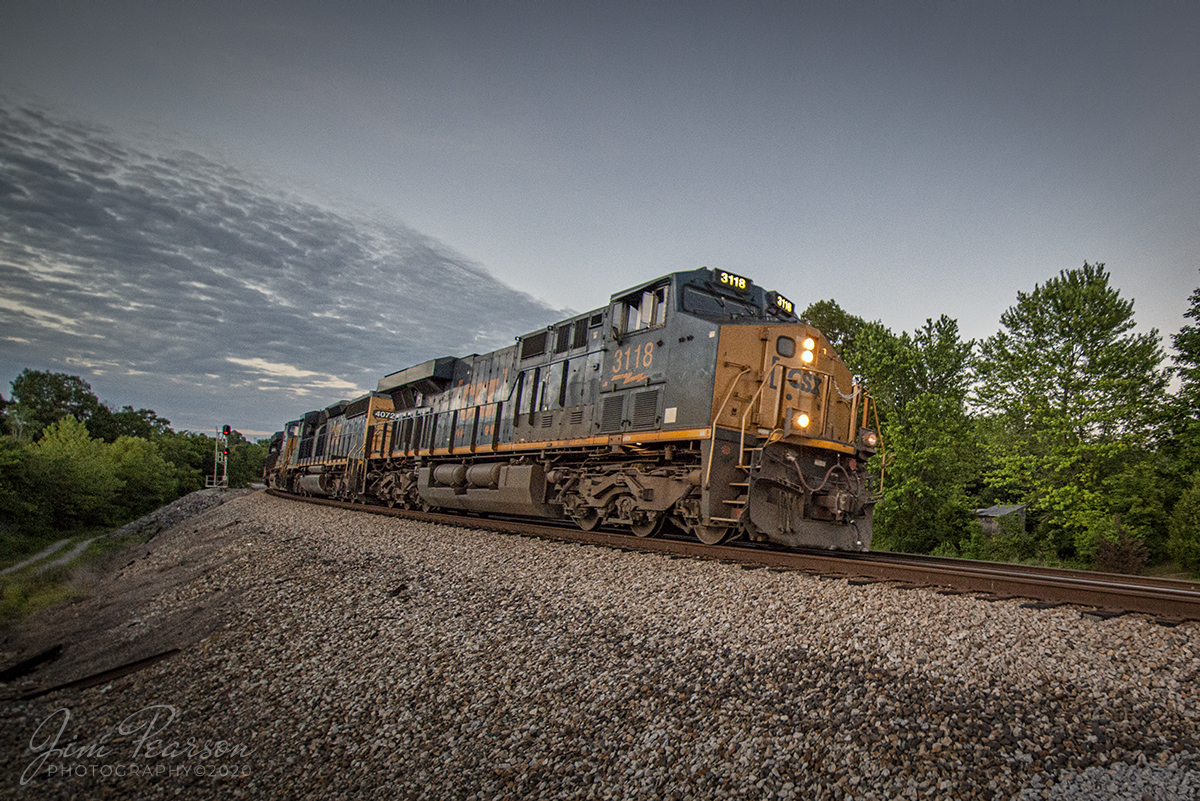One of the new CSX Heritage series locomotives, the Seaboard System unit 1982, leads on CSX I026 as it heads north at dusk at Madisonville, Ky, on March 2nd, 2024, on the Henderson Subdivision.
I first caught this train at Red River at Adams, TN and it was about 60 miles later here in Madisonville, Ky before I was able to get far enough ahead of it to setup for another shot.
I had hoped it would show up before the sunset, but alas, it didn’t happen. However I’m very pleased with this shot with my drone. I’ve been using DxO Pure RAW 3 for noise removal and it did a fantastic joh on this shot that was made at ISO 2630!
According to Wikipedia: The Seaboard System Railroad, Inc. (reporting mark SBD) was a US Class I railroad that operated from 1982 to 1986.
Since the late 1960s, Seaboard Coast Line Industries had operated the Seaboard Coast Line and its sister railroads, notably the Louisville & Nashville and Clinchfield, as the “Family Lines System”. In 1980, SCLI merged with the Chessie System to create the holding company CSX Corporation; two years later, CSX merged the Family Lines railroads to create the Seaboard System Railroad.
In 1986, Seaboard renamed itself CSX Transportation, which absorbed the Chessie System’s two major railroads the following year.
Tech Info: DJI Mavic 3 Classic Drone, RAW, 22mm, f/2.8, 1/240, ISO 2630.

